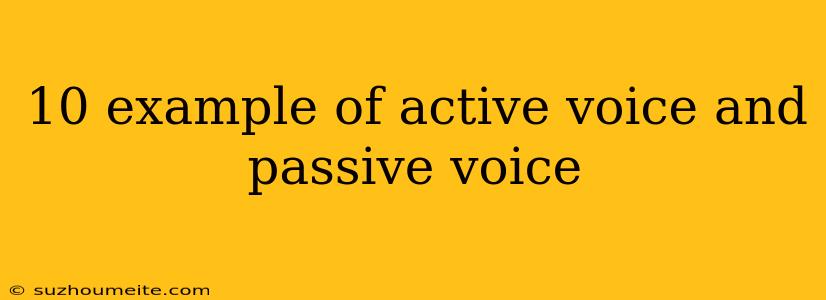10 Examples of Active Voice and Passive Voice
In English grammar, voice refers to the way the subject of a sentence relates to the action described by the verb. There are two main types of voice: active voice and passive voice. Understanding the difference between active and passive voice can help you communicate more effectively in writing and speaking.
Active Voice
In active voice, the subject of the sentence performs the action described by the verb. The subject is the doer or the actor.
Examples of Active Voice:
- The dog bites the man. (The subject "dog" performs the action "bites")
- The teacher writes the lesson plan. (The subject "teacher" performs the action "writes")
- The company will launch the new product. (The subject "company" performs the action "will launch")
Passive Voice
In passive voice, the subject of the sentence receives the action described by the verb. The subject is the receiver of the action.
Examples of Passive Voice:
- The man was bitten by the dog. (The subject "man" receives the action "was bitten")
- The lesson plan is written by the teacher. (The subject "lesson plan" receives the action "is written")
- The new product will be launched by the company. (The subject "new product" receives the action "will be launched")
More Examples:
-
Active: She eats an apple. (The subject "she" performs the action "eats") Passive: An apple is eaten by her. (The subject "apple" receives the action "is eaten")
-
Active: The chef cooks the meal. (The subject "chef" performs the action "cooks") Passive: The meal is cooked by the chef. (The subject "meal" receives the action "is cooked")
-
Active: The police officer arrested the suspect. (The subject "police officer" performs the action "arrested") Passive: The suspect was arrested by the police officer. (The subject "suspect" receives the action "was arrested")
-
Active: The storm destroyed the house. (The subject "storm" performs the action "destroyed") Passive: The house was destroyed by the storm. (The subject "house" receives the action "was destroyed")
-
Active: The company is building a new factory. (The subject "company" performs the action "is building") Passive: A new factory is being built by the company. (The subject "factory" receives the action "is being built")
-
Active: The student wrote the essay. (The subject "student" performs the action "wrote") Passive: The essay was written by the student. (The subject "essay" receives the action "was written")
-
Active: The coach trains the team. (The subject "coach" performs the action "trains") Passive: The team is trained by the coach. (The subject "team" receives the action "is trained")
Understanding the difference between active and passive voice can help you express yourself more clearly and effectively in your writing and speaking.
